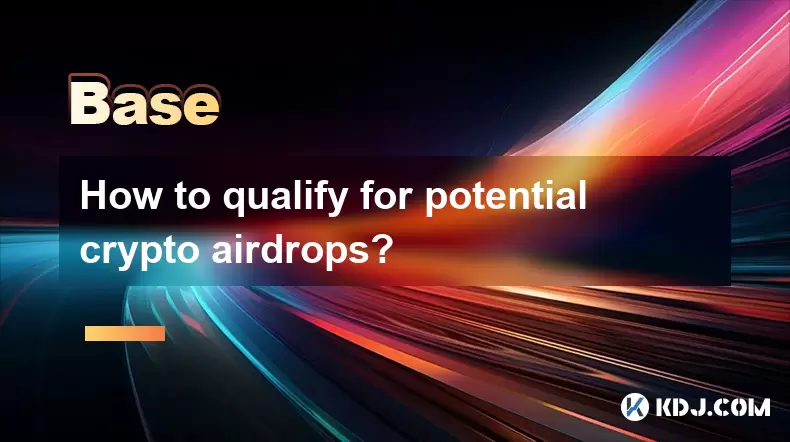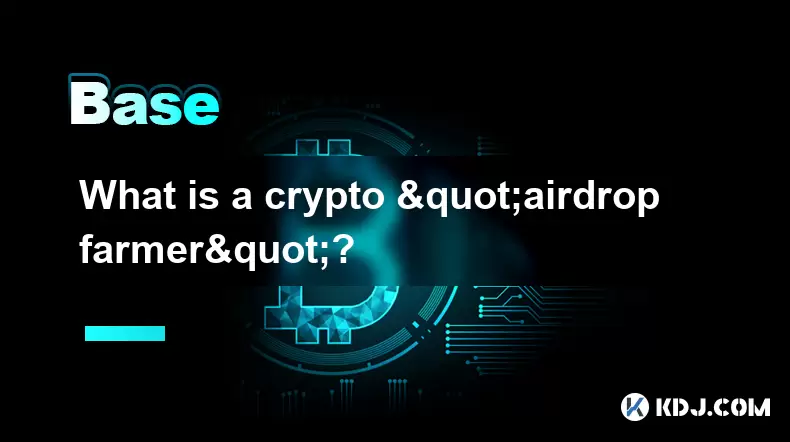-
 Bitcoin
Bitcoin $119800
1.38% -
 Ethereum
Ethereum $3873
3.25% -
 XRP
XRP $3.247
1.85% -
 Tether USDt
Tether USDt $1.001
0.02% -
 BNB
BNB $840.4
5.94% -
 Solana
Solana $190.0
2.55% -
 USDC
USDC $1.000
0.03% -
 Dogecoin
Dogecoin $0.2433
2.69% -
 TRON
TRON $0.3197
-0.05% -
 Cardano
Cardano $0.8367
1.39% -
 Sui
Sui $4.327
3.11% -
 Hyperliquid
Hyperliquid $44.00
0.31% -
 Stellar
Stellar $0.4461
1.76% -
 Chainlink
Chainlink $19.25
4.61% -
 Hedera
Hedera $0.2941
3.90% -
 Bitcoin Cash
Bitcoin Cash $598.4
6.89% -
 Avalanche
Avalanche $26.19
4.67% -
 Litecoin
Litecoin $115.1
0.50% -
 Shiba Inu
Shiba Inu $0.00001427
1.55% -
 Toncoin
Toncoin $3.379
2.01% -
 UNUS SED LEO
UNUS SED LEO $8.966
-0.16% -
 Ethena USDe
Ethena USDe $1.001
0.02% -
 Uniswap
Uniswap $11.04
4.16% -
 Polkadot
Polkadot $4.239
2.00% -
 Monero
Monero $324.6
0.36% -
 Bitget Token
Bitget Token $4.672
2.46% -
 Pepe
Pepe $0.00001294
2.69% -
 Dai
Dai $0.0000
0.01% -
 Cronos
Cronos $0.1443
2.71% -
 Aave
Aave $302.9
1.98%
Crypto Community Jargon: A Practical Guide from DYOR to WAGMI
DYOR means doing your own research before investing in crypto, while HODL is about holding onto your assets despite market volatility. #CryptoJargon
May 11, 2025 at 01:49 pm

The world of cryptocurrency is filled with unique jargon that can be overwhelming for newcomers. From DYOR to WAGMI, understanding these terms is essential for navigating the crypto community effectively. This practical guide will break down some of the most common phrases and acronyms, helping you to communicate and engage with confidence.
DYOR: Do Your Own Research
DYOR, or Do Your Own Research, is a fundamental principle in the crypto community. It emphasizes the importance of conducting thorough personal research before making any investment decisions. Relying solely on others' advice can be risky, and DYOR encourages individuals to understand the projects, teams, and technologies they are interested in.
To effectively practice DYOR, consider the following steps:
- Identify reliable sources: Look for reputable websites, whitepapers, and official social media channels of the projects you're interested in.
- Analyze the team: Research the backgrounds and track records of the project's team members. Experienced and credible teams often increase the likelihood of a project's success.
- Evaluate the technology: Understand the technology behind the project. Is it innovative? Does it solve a real-world problem?
- Check community sentiment: Engage with the project's community on platforms like Reddit, Twitter, and Telegram to gauge sentiment and gather additional insights.
- Review financial metrics: Look at market capitalization, trading volume, and other financial indicators to assess the project's health and potential.
HODL: Hold On for Dear Life
HODL, originally a typo for "hold," has become a popular term among crypto enthusiasts. It refers to the strategy of holding onto your cryptocurrencies despite market volatility. The idea behind HODL is that those who remain patient and do not panic-sell during dips may benefit from long-term gains.
The concept of HODL is rooted in the belief that the crypto market will eventually recover and grow. Here are some tips for successful HODLing:
- Set clear goals: Determine your investment timeline and risk tolerance. Are you in it for the long haul, or do you need liquidity in the short term?
- Diversify your portfolio: Don't put all your eggs in one basket. Spread your investments across different cryptocurrencies to mitigate risk.
- Stay informed: Keep up with market trends and news that may affect your investments, but avoid making impulsive decisions based on short-term fluctuations.
- Embrace volatility: Understand that the crypto market is inherently volatile. Prepare mentally and financially for ups and downs.
FOMO: Fear Of Missing Out
FOMO, or Fear Of Missing Out, is a common emotion in the crypto world. It drives investors to make hasty decisions based on the fear that they might miss out on a lucrative opportunity. While FOMO can lead to quick profits, it often results in poor investment choices.
To manage FOMO effectively, consider these strategies:
- Stick to your research: Trust the research you've done and the investment thesis you've developed. Don't let the actions of others sway you from your plan.
- Set strict investment criteria: Define clear criteria for when to enter and exit investments. This can help you avoid impulsive decisions driven by FOMO.
- Limit exposure to hype: Be cautious of social media and forums where hype can be rampant. Focus on quality information rather than sensationalist posts.
- Practice patience: Remember that the crypto market offers numerous opportunities. There's no need to jump on every trend or new project.
WAGMI: We're All Gonna Make It
WAGMI, or We're All Gonna Make It, is a phrase used to express optimism and camaraderie within the crypto community. It reflects a collective belief in the potential for success and prosperity in the cryptocurrency space. WAGMI is often used to encourage and uplift fellow investors during challenging times.
To embrace the WAGMI mindset, consider the following:
- Support the community: Engage positively with other crypto enthusiasts. Share knowledge, insights, and encouragement.
- Focus on long-term goals: Keep your eyes on the prize. Short-term setbacks are part of the journey, but the long-term vision is what matters.
- Celebrate successes: Acknowledge and celebrate the successes of yourself and others. This fosters a positive and supportive environment.
- Stay resilient: The crypto journey can be challenging. Maintain resilience and a positive outlook, knowing that perseverance can lead to rewards.
BUIDL: Build
BUIDL, a playful twist on the word "build," emphasizes the importance of taking action and contributing to the crypto ecosystem. It encourages individuals to not just invest in cryptocurrencies but to actively participate in developing projects, platforms, and technologies.
To embody the BUIDL spirit, consider these steps:
- Learn and upskill: Invest time in learning about blockchain technology, smart contracts, and other relevant skills. Platforms like Coursera, Udemy, and free resources like CryptoZombies can be valuable.
- Join a project: Look for open-source projects or startups where you can contribute your skills. Websites like GitHub and forums like Reddit can connect you with opportunities.
- Create your own project: If you have a unique idea, consider building your own project. Start small and seek feedback from the community.
- Network and collaborate: Attend crypto conferences, join online communities, and network with like-minded individuals. Collaboration can lead to new opportunities and insights.
FAQs
Q: What is the difference between HODL and BUIDL?
A: HODL refers to the strategy of holding onto your cryptocurrencies for the long term, regardless of market volatility. It's a passive approach focused on investment. BUIDL, on the other hand, emphasizes active participation and contribution to the crypto ecosystem through development and building projects. It's about taking action and adding value.
Q: Can FOMO be beneficial in any way?
A: While FOMO often leads to poor investment decisions, it can sometimes prompt individuals to research and invest in promising projects they might have otherwise missed. However, it's crucial to balance FOMO with thorough research and a disciplined investment approach.
Q: How can I differentiate between reliable and unreliable sources when practicing DYOR?
A: Reliable sources typically include official project documentation (whitepapers), reputable news outlets (like CoinDesk and CoinTelegraph), and official social media channels. Unreliable sources might include unverified social media accounts, anonymous tips, and forums with unverified information. Always cross-reference information and look for consensus among multiple credible sources.
Q: Is WAGMI just a feel-good phrase, or does it have practical implications?
A: While WAGMI is often used to boost morale and foster community spirit, it also has practical implications. It encourages a long-term perspective and resilience, which are crucial for navigating the volatile crypto market. Embracing the WAGMI mindset can help investors stay committed to their goals and support each other through ups and downs.
Disclaimer:info@kdj.com
The information provided is not trading advice. kdj.com does not assume any responsibility for any investments made based on the information provided in this article. Cryptocurrencies are highly volatile and it is highly recommended that you invest with caution after thorough research!
If you believe that the content used on this website infringes your copyright, please contact us immediately (info@kdj.com) and we will delete it promptly.
- Crypto's Next Big Meme: Is MAGACOIN Finance the New DOGE or SHIB?
- 2025-07-28 17:15:12
- Altcoins, Cryptos, and 250x Potential: Catching the Next Wave
- 2025-07-28 17:15:12
- Ethereum ETFs Steal the Show: Bitcoin Disparity and Whale Buys Fuel ETH Rally
- 2025-07-28 17:20:12
- Whale Alert: Solana Dive into Vine Coin – Risky Move or Genius Play?
- 2025-07-28 17:20:12
- ERC-20 Tokens: Still Ruling Ethereum in the 2020s?
- 2025-07-28 17:25:15
- Bitcoin, Ethereum, Lost Forever: A Billion-Dollar Digital Black Hole
- 2025-07-28 14:30:12
Related knowledge

What is the difference between CeFi and DeFi?
Jul 22,2025 at 12:28am
Understanding CeFi and DeFiIn the world of cryptocurrency, CeFi (Centralized Finance) and DeFi (Decentralized Finance) represent two distinct financia...

How to qualify for potential crypto airdrops?
Jul 23,2025 at 06:49am
Understanding What Crypto Airdrops AreCrypto airdrops refer to the distribution of free tokens or coins to a large number of wallet addresses, often u...

What is a crypto "airdrop farmer"?
Jul 24,2025 at 10:22pm
Understanding the Role of a Crypto 'Airdrop Farmer'A crypto 'airdrop farmer' refers to an individual who actively participates in cryptocurrency airdr...

What is the difference between a sidechain and a Layer 2?
Jul 20,2025 at 11:35pm
Understanding the Concept of SidechainsA sidechain is a separate blockchain that runs parallel to the main blockchain, typically the mainnet of a cryp...

What is the Inter-Blockchain Communication Protocol (IBC)?
Jul 19,2025 at 10:43am
Understanding the Inter-Blockchain Communication Protocol (IBC)The Inter-Blockchain Communication Protocol (IBC) is a cross-chain communication protoc...

How does sharding improve scalability?
Jul 20,2025 at 01:21am
Understanding Sharding in BlockchainSharding is a database partitioning technique that is increasingly being adopted in blockchain technology to enhan...

What is the difference between CeFi and DeFi?
Jul 22,2025 at 12:28am
Understanding CeFi and DeFiIn the world of cryptocurrency, CeFi (Centralized Finance) and DeFi (Decentralized Finance) represent two distinct financia...

How to qualify for potential crypto airdrops?
Jul 23,2025 at 06:49am
Understanding What Crypto Airdrops AreCrypto airdrops refer to the distribution of free tokens or coins to a large number of wallet addresses, often u...

What is a crypto "airdrop farmer"?
Jul 24,2025 at 10:22pm
Understanding the Role of a Crypto 'Airdrop Farmer'A crypto 'airdrop farmer' refers to an individual who actively participates in cryptocurrency airdr...

What is the difference between a sidechain and a Layer 2?
Jul 20,2025 at 11:35pm
Understanding the Concept of SidechainsA sidechain is a separate blockchain that runs parallel to the main blockchain, typically the mainnet of a cryp...

What is the Inter-Blockchain Communication Protocol (IBC)?
Jul 19,2025 at 10:43am
Understanding the Inter-Blockchain Communication Protocol (IBC)The Inter-Blockchain Communication Protocol (IBC) is a cross-chain communication protoc...

How does sharding improve scalability?
Jul 20,2025 at 01:21am
Understanding Sharding in BlockchainSharding is a database partitioning technique that is increasingly being adopted in blockchain technology to enhan...
See all articles

























































































